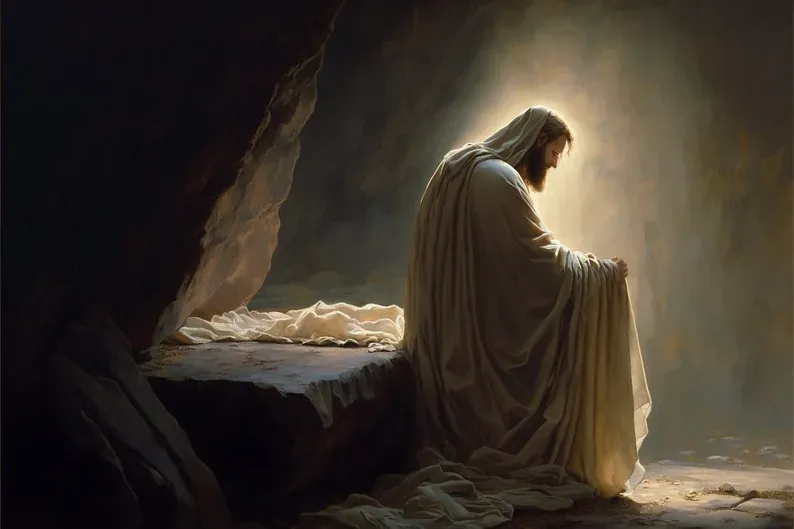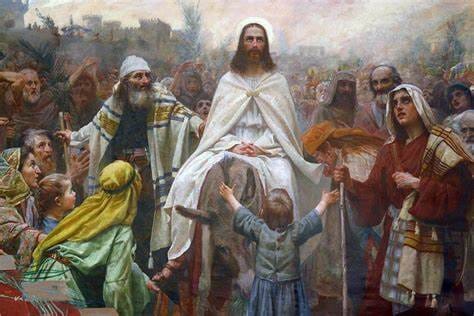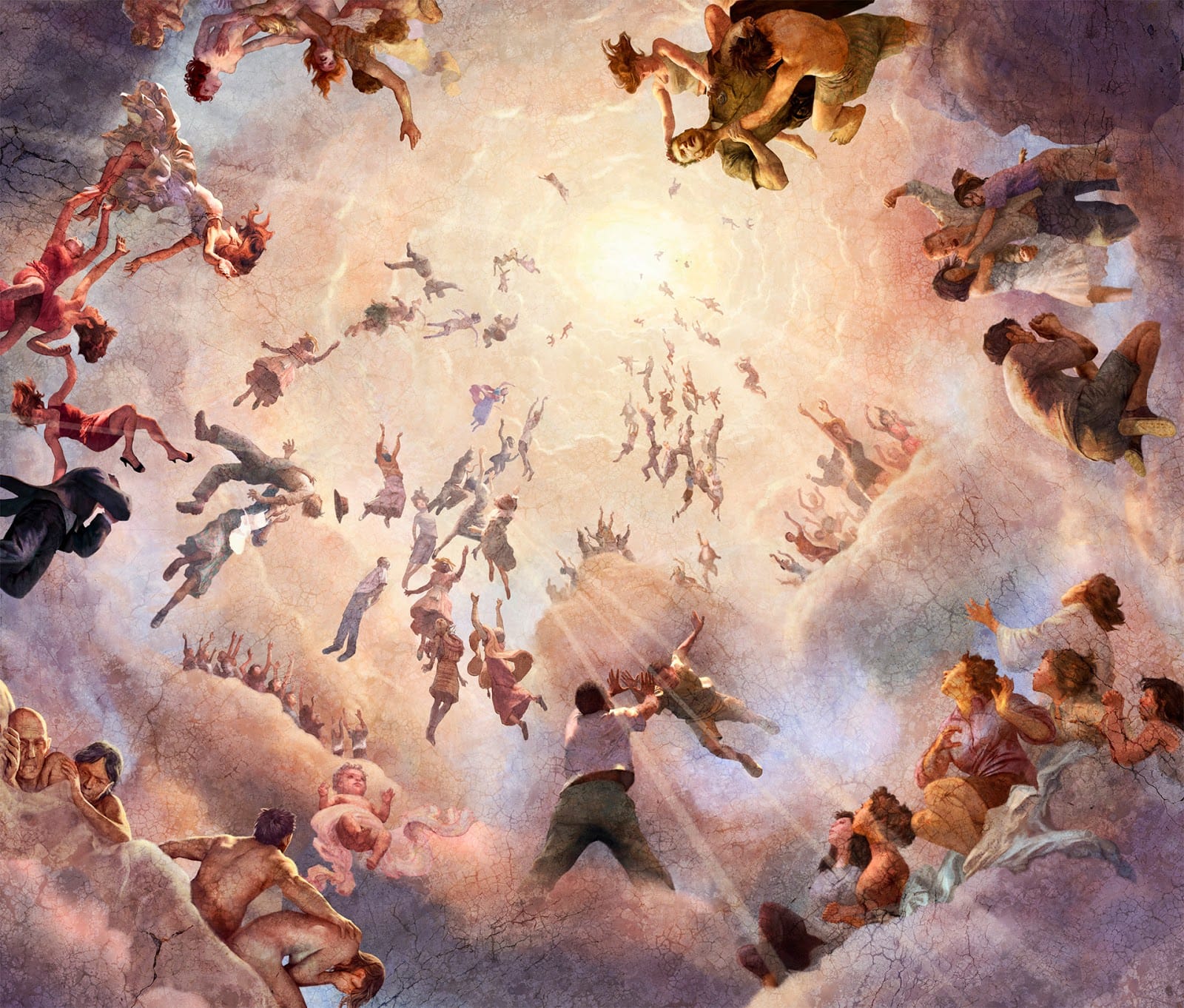
Q&A: Why We Do Not Celebrate Easter on April 5th Revealed
Question: I read that you think Jesus was crucified on Friday, April 3rd and Resurrected on Sunday, April 5th. So if that’s true, why don’t we celebrate these dates instead of the ones we currently do?
Well, leave it up to men to take a simple yet momentous date and make it as complicated as possible. The problem with celebrating the actual dates has to do with the irregular rotation of the Earth, the desires of a Catholic Pope and the creation of the modern calendar.
First: If you wanted to observe the actual date Jesus was crucified in 33 A.D. you should observe Friday, April 3rd for His crucifixion (Saturday the 4th was Passover) and Sunday, April the 5th for His resurrection. Now, right off the bat we know that April 3rd and 5th do not always occur on Friday and Sunday. Instead, they more often occur on various other days of the week depending on the year. This is the same for a person’s birthday. They may have been born on a Wednesday, but their birth day will only fall on a Wednesday once every seven years. And, if there is a leap year involved, the whole calculation gets moved two days backwards or forwards depending on birthdays before and after February. In other words, you just can’t have your cake and eat it too.

Second: The Jews always celebrate Passover on the Spring full moon which almost always falls in the month of Nissan or April. But occasionally, the Spring full moon and Passover will occur in late March. The ancient Jewish religious calendar consists of thirty days a month and 360 days a year. Therefore the full moon always occurred on the 15th of the month. But, this calendar is inaccurate and aways had to be adjusted to compensate for the fact that there are 365.25 days in a year. So today, the Jews simply celebrate Passover during a Spring full moon regardless of when it appears, but usually in April.

Third: Here is where the Pope comes in. In 1572 Pope Gregory declared that he wanted to celebrate the resurrection of Christ or Easter always on a Sunday. As you have seen, it is impossible to have April the 5th always fall on a Sunday much less during a full moon as occurred on Passover in 33 A.D. So the Pope turned to his best astronomer Luigi Lilo, and best mathematician Aloysius Lillus, and told them to figure it out and make it happen.
The first thing they did was to design a calendar with 365 ¼ days in it. Lillus then reckoned adjusting for the ¼ day by adding one day to the month of February when the date of the year was divisible by four. There, that was easy. He then decided that the only way to have Easter occur on a Sunday would have to be somewhat arbitrary unless you want to go with it on April the 5th regardless of the day of the week. But no, the Pope insisted it was more important for it to occur on a Sunday as it did in 33 A.D. So Lillus went with the recommendation of the Nissan Council of 325 A.D. Easter should be held on the first Sunday after the first full moon after the Vernal {Spring} Equinox. There, that was easy?
The Pope was now happy that the new calendar was accurate and easily adjusted to account for the annual quarter day. He was also happy that Easter would now always occur on a Sunday in the Spring. His only question was, according to the new improved calendar, what day, month and year were they currently in? Lillus told the Pope that the year could be year one or any year he wanted it to be. The Pope, being the Pope, decide this new calendar should start with year 1 being the birth date of Jesus. This was a whole new and unknowable request from the Pope. Christians had been celebrating Jesus’ birthday on December 25th since c.200 A.D. But no one knew the actual year He was born. So Lillus said to the Pope, “Great! So how many years ago was Jesus born?” The Pope said to Lillus, “Why are you asking me? How should I know? Go into the Vatican Library and figure it out man!” So Lillus went into the library and found literally one small short notation written by Dionysus Exiguus (460-544 A.D.). Exiguus stated that according to his calculations, Jesus was born 553 years earlier. It was Exiguus that created the terms B.C. (Before Christ) and A.D. (Anno Domini or in the year of our Lord). Lillus found no notes from Exiguus on how he deduced his date nor any other texts in the library to corroborate Exiguus’ claim. But, because it was the only writing Lillus could find on the subject, he took the the note Exiguus had dated, went back 553 years, and then started slowly moving forward year by year carefully cross-referencing the dates of Roman rulers with the dates of reigning Popes.

To help discover the exact date Jesus was crucified and was resurrected, we need to start with His birth date and work forwards. This is where Herod the Great now enters the picture. Interestingly, before 1544 A.D., Herod’s death was always cited as having occurred in 1 B.C. Then, for unknown reasons, after 1544, this date began to be listed listed as 4 B.C. Fortunately, today we have two sources that help in discovering which date is accurate. One is a notation by a famous historian, and the other is modern astronomy. The famous Jewish historian Josephus tells us that Herod died during an eclipse of the moon. Modern astronomy shows us that there was an eclipse on December 29th 1 B.C. and while there was a partial lunar eclipse in 4 B.C., it was not visible in Judah. So, we can now rely on a series of dates that fit together perfectly like pieces of a puzzle.
Modern astronomy tells us that Jesus was born June 17th 2 B.C. when the planets Venus and Jupiter conjoined and created the brightest celestial object ever seen in the night sky. The Magi, as cited by Matthew, visited His family in their home in Bethlehem six months later and celebrated His birth on December 25th2 B.C. Herod had the children of Bethlehem murdered a few days later on December 29th 2 B.C. And according to Josephus, Herod died an excruciating death exactly one year later on December 29th 1 B.C. This date coincides perfectly with an eclipse of the moon, and the one year anniversary of Herod's order to kill the children. Fascinating! Now back to Lillus and his less than scientific search to discover the date Jesus was born.
After ten years of working on the calendar, Lillus finally concluded that the date he and the Pope were currenting living in was “most probably” 1582 as that was the number of years that had probably passed since the birth of Christ according to Exiguus. On October 15th, 1582 Pope Gregory announced the creation of the new official Gregorian calendar of the Christian church. Thus, everyone was happy. And amazingly, Lillus only missed the actual date of the birth of Jesus by two years. Some scholars theorize that he was off by two years because he did not count or credit the years Augustus ruled Rome before he was given the title Caesar.

There are only four dates the protestant church generally celebrates concerning Christ. First, is His last entrance into Jerusalem on Palm Sunday. Second, is the date He was Crucified known as Good Friday. Third, is His Resurrection called Easter Sunday. Fourth, is the date we use to celebrate His birth known as Christmas {Christ-Mass}. Interestingly, this birth date is first mentioned in c.200 A.D. by a Christian Egyptian teacher. This date was declared the official day to celebrate the Birth of Christ by Emperor Constantine in 336 A.D. We continue this tradition of celebrating this date as it was the day His birth was first celebrated by Wise Men.
Today, the Jews continue to celebrate Passover on the Spring full moon regardless of the day of the week and usually in April. The Church celebrates Easter on the first Sunday, after the first full moon, after the Spring Equinox which is usually in the month of April. And for those who insist to observing the actual date of Jesus' crucifixion, it is April 3rd with His resurrection occurring on April 5th.

On a closing note, the 2,000 year anniversary of the actual dates of Jesus’ Crucifixion and Resurrection will occur on April 3rd and 5th, 2033 A.D. Could this be the date of the Second Coming? If you were to subtract seven years from that date, to account for the Tribulation Period, you arrive at the date 2026. And in the year 2026, April the 3rd falls on a Friday and the 5th on a Sunday just as it did 2,000 years ago. Further, the Rapture of the Church will occur sometime before the start of the seven year Tribulation Period. Many scholars believe that the Rapture date is a shadow prophecy directly related to the annual Fall Jewish Feast of Trumpets. Please see related: "When Will the Rapture and Second Coming Occur?" During that feast time, the Jews hear the sounding of the shofar {trumpet} and run into their fields quickly harvesting their ripened crops. Then they store this valuable possession up in siloes for safe keeping from the coming storms, possible civil unrest and thieves (I Thessalonians 4:16-17; Revelation 4:1). In 2026, the Feast of Trumpets occurs on September 11th-13th.
We live in exciting times!
If you enjoy the information provided on this site, please consider making a donation of any amount to help continue its production. Donate Now